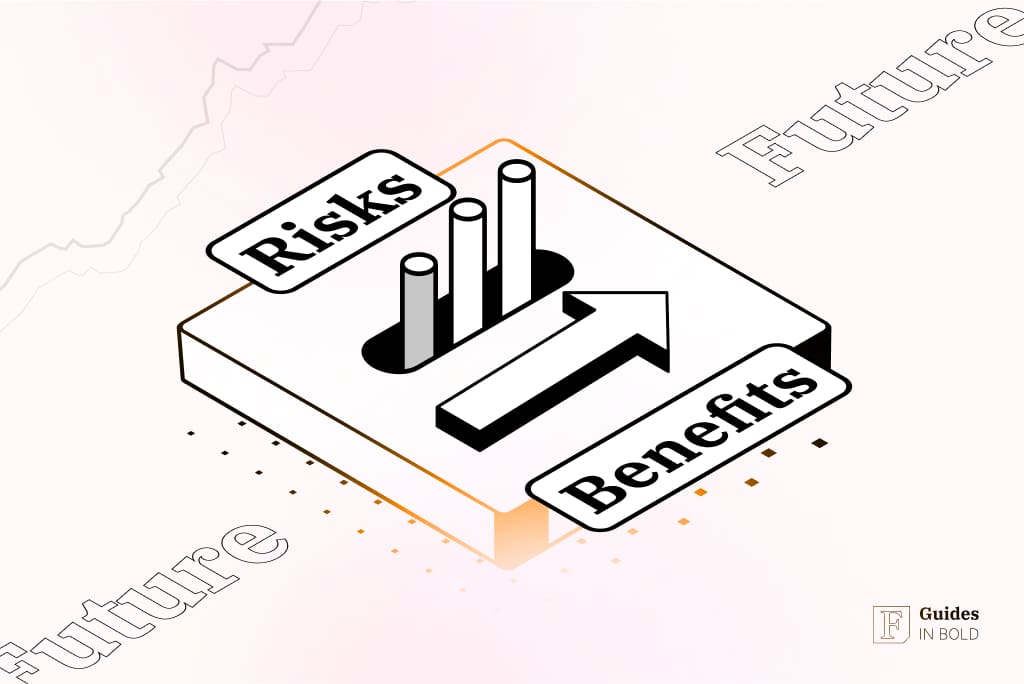Margin trading is a common practice in the futures market, allowing traders to amplify their potential profits by using borrowed funds. While margin trading can be enticing, it’s important to understand both the benefits and risks associated with this trading strategy.
Many of the essentials to understand are also featured at Plus500 US Futures*.
*Trading in futures involves the risk of loss.
In this educational blog post, we will delve into the advantages and potential pitfalls of trading with margin in the futures market. By gaining a comprehensive understanding of these factors, traders can make informed decisions and manage their risk effectively.
Benefits of Trading with Margin
Increased Trading Power: One of the primary benefits of trading with a margin is the ability to increase your trading power. By utilizing borrowed funds, traders can control a larger position in the market than their account balance would allow. This increased leverage can result in amplified profits if the trade goes in their favor.
Diversification and Flexibility: Margin trading provides traders with the opportunity to diversify their portfolios and explore a wider range of trading opportunities. With the ability to trade larger positions, traders can take advantage of various market trends and potentially enhance their overall returns.
Potential for Higher Profits: The leverage provided by margin trading allows traders to magnify their potential profits. By utilizing borrowed funds, even small price movements in the futures market can generate significant returns. This potential for higher profits is a key attraction for many traders.
Risks of Trading with Margin
Increased Risk of Losses: While margin trading offers the potential for higher profits, it also exposes traders to increased risk. The same leverage that can amplify gains can also amplify losses. If a trade goes against you, the losses can exceed your initial investment, leading to significant financial implications and unlimited losses. It’s crucial to carefully manage risk and set appropriate stop-loss orders to protect your capital.
Margin Calls and Liquidation: Margin trading involves borrowing funds, and traders must maintain a minimum margin requirement. If the value of your account falls below this threshold, you may receive a margin call from your broker, requiring you to deposit additional funds. Failure to meet a margin call can result in the liquidation of your position, potentially leading to substantial losses.
Volatility and Market Uncertainty: Margin trading is particularly sensitive to market volatility and unexpected price movements. The futures market can experience rapid fluctuations, and sudden price swings can erode margins quickly. Traders must be prepared for market uncertainties and have strategies in place to mitigate risks associated with unpredictable market conditions.
Emotional and Psychological Impact: Margin trading can be psychologically challenging. The amplified stakes and potential for large gains or losses can evoke strong emotions and increase the pressure on traders. It’s essential to maintain discipline, adhere to a well-thought-out trading plan, and avoid emotional trading, as this can be the road to ruin.
Risk Management Strategies
Thorough Research and Education: Proper education and understanding of the futures market, including margin trading, is crucial. Traders should thoroughly research the market, study trading strategies, and stay updated with relevant news and events. Knowledge empowers traders to make informed decisions and reduces the likelihood of costly investing mistakes.
Setting Realistic Expectations: It’s important to set realistic expectations when engaging in margin trading. Recognize that both profits and losses can be magnified, and understand the risks involved. By having a realistic outlook, traders can approach the market with a balanced perspective and make sound decisions.
Implementing Risk Management Tools: Utilize risk management tools such as stop-loss orders and take-profit levels to protect your capital and secure profits. These tools can help limit potential losses and ensure disciplined trading.
Monitoring Margin Requirements: Regularly monitor your margin requirements to ensure you maintain a comfortable buffer. Stay aware of any changes in margin rules and adjust your positions accordingly to avoid margin calls and potential liquidation.
Margin trading in the futures market can offer traders increased trading power and the potential for higher profits.
However, it comes with significant risks that should not be overlooked. Traders must carefully consider the benefits and risks associated with margin trading and develop effective risk management strategies.
Note
Remember, the key to successful margin trading lies in striking a balance between potential rewards and prudent risk management.
Disclaimer: The content on this site should not be considered investment advice. Investing is speculative. When investing, your capital is at risk.




